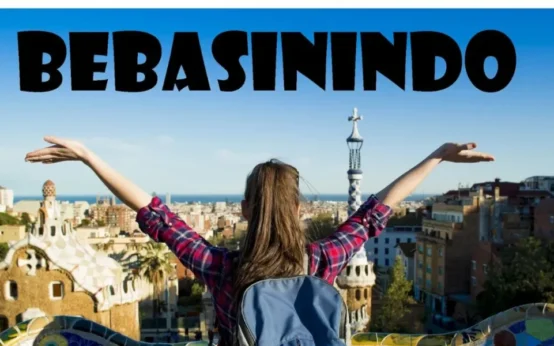Introduction to Iganiny
Iganiny is not solely a game but an art piece comprising unparalleled elements of culture, history, and community. The game is fascinating as it stems from traditional practices, allowing for endless exploration. With each played match, a story unfolds that reveals the myths and values of an entire culture. Whether you have stumbled upon this cultural marvel or are hearing about it for the first time, come along as we look into the world of Iganiny and its sophisticated legacy that is more than just an entertaining experience; instead, it is a game waiting to be uncovered.
Table of Contents
The Origins of Iganiny
Iganiny is said to have originated from ancient tribal formations, served as a means of social interaction, and has other meanings that remain vague and unexplained. Iganiny translates to this game’s great cultural ancestor regarding a person’s social stature and standing.
Iganiny is said to have been a by-product of a rite elevated during the transition of specific seasons. These rituals set apart were important in replacing people through a familiar tale or mission.
As the years transcended, so did the game. Iganiny picked characteristics from other civilizations and empires stretching from its borders but never forgot its roots. From the simple structure of the game, it could be participated in from youth to old age, cleansing the need to preserve history.
Like any game, it was bound to have different Mississippis, and this ability gives every culture an opportunity to people in an impactful way. Even now, the stems of these regions serve as the basis of history and culture.
Historical Background and Origins of Iganiny
Iganiny has been around for centuries and originated from native cultures. Local tribes first played it as a form of entertainment and community integration.
The evolution of the game tells the story of wars and trade. With cultural intermixing through trade, Iganiny expanded into nearby regions, making it more diverse and appealing.
The legends of the game’s origins have been passed on through oral stories. Most of the focus is on unity and resilience among players. Each non-centralized variation has its distinct set of regional rules.
The artifacts linked to the primitive forms of the Iganiny game give enthralling glimpses into ancient societies. Their archaeological findings show how the game was mingled with rituals and festivities, marking its significance beyond recreation.
Cultural Practices and Beliefs of Iganiny
The people of Iganiny have traditional practices and beliefs that form its peoples’ cultural cornerstone. Peopleame is more than a sport; it is a cultural phenomenon that unites people socially.
The participants gather for pre-game rituals. These rituals typically involve storytelling, during which the participants ask their ancestors for help and protection. The players learn about their identity through the stories told during these rituals.
Germanzers exhibit this forte in another way, too, by organizing community gatherings. It helps to foster friendship among contestants and spectators, making the channel of reminiscences perpetual. The atmosphere is pervaded with joyful shouts, laughter, and nostalgia, strengthening connections between a community and its roots.
The belief of Iganiny’s people also encompasses the environment. The contestants appreciate nature in ensuring application during the game and respect the suspended places for their traditional participation and practice in this game.
The Rules and Gameplay of Iganiny
Iganiny is a game rich with traditions, and the rules are rooted in culture. Players are split into teams with the primary goal of using skill and wits to beat their opponents.
The game starts with a bounded region of play where teams alternate turns attempting to score points by accomplishing specific goals set for each round. Communication plays a central role; the players must cooperate in their strategies.
Respect for the opponents, fairness, and good manners are the key aspects of Iganiny. Not only does this attitude promote competition, but it also encourages a degree of togetherness. As teams compete, the intensity builds, yet, in the background, an element of friendship is preserved.
The addition of time limits also adds an element of thrill, requiring players to think on their feet and make moves fast. Each game, depending on the team’s atmosphere and the strengths of its members, tells a different story.
Physical and Mental Benefits of Playing Iganiny
Iganiny has both physical and mental benefits. The game entails moving around, being agile, and having good coordination. The players increase their cardiovascular wellness during the gameplay, which is quite active. Reflexes are sharpened with the presence of a fast-paced Iganiny.
As for the mental part, Iganiny increases the ability to formulate effective strategies. Every player takes part in predicting their opponents’ moves to allow themselves to react. This promotes problem-solving capabilities that go beyond the game itself.
Interaction with other people is another significant aspect. Effective interpersonal relations have been proven to promote teamwork and communication ability. Participating in games with others as a means of socialization improves mental health.
Most importantly, participation in these events enhances an individual’s relaxation. The joy and fun of playing these games is a natural way of enhancing moods.
The combination of physical activity and solving the Iganiny puzzle distinguishes the game. It is meticulously more than a hobby and is excellent for developing the body and mind.
Impact of Colonialism on Iganiny’s Culture
Colonialism altered the culture of Iganiny due to external forces trying to disrupt the indigenous customs. The indigenous people were forced to follow a system that was alien to them.
European customs were adopted, while many local practices were abandoned. This often led to the loss of cultural identity for many of the Iganiny regions.
Conversely, during this time, many practitioners tried creating resilient methods of heritage preservation, which sought to protect their culture. And so, colonial influences were incorporated while the core of Iganiny’s traditions remained intact.
This fusion of influences gave rise to wondrous new forms of the game and its accompanying rituals. The spirit of Iganiny was alive — alive in the forms of adaptations that withstood challenges and encapsulated the feeling of survival during transformative periods.
Now, after years, snippets of this historical strife are engrained with modern-day interpretations that showcase complex cultures.
Preservation Efforts and Modern Adaptations
Efforts to preserve Iganiny have expanded in scope in recent years. Different communities are coming together to protect those that have cultural values. Local initiatives bound by foundations and cultural associations are significant in these activities.
New forms of Iganiny have also come about, bridging the past and the present. New workshops and festivals aim to nurture old traditions with a fresh twist. This mix enables the younger generation to connect with their culture more deeply.
Preservation can also be pursued through other means in the digital world. This has been made possible through online platforms that feature videos on how to play, its history, and its relevance today. Social media channels create awareness and interest, and many groups respond positively.
Now, even schools teach Iganiny as part of the syllabus to students from different cultures and backgrounds. All these developments make sure that Iganiny does not lose its spirit as time progresses and that its many facets are embraced by a world with so many cultures.
Influence of Iganiny’s Culture on Contemporary Society
From afar, one can easily spot Iganiny’s heritage as it is deeply embedded in contemporary culture. Several popular songs and dances claim to draw inspiration from aged folk beats and performances.
More and more people are adopting Iganiny in their cultural feasts and social circles, further promoting cultural cohesion among people of different backgrounds. These events allow for more decisive social bonds to be cultivated through sharing folklore.
Additionally, younger students are starting to learn about Iganiny in schools, enabling them to understand the past passed down and its intricacies better.
Iganiny’s ingrained culture also benefits from social media and online communication. Such platforms let people document their experiences and link with other Iganiny aficionados.
In one way or another, Iganiny is widely relevant, and its legacy keeps pushing through modern influences and restructuring.
Conclusion: The Enduring Legacy of Iganiny
The cultural legacy of ignominy is vibrant and longstanding. The roots of this culture are profound. The customs and values of the communities that have accepted it over the years have become more apparent. While looking at its context, I see that so many life stories are camouflaged within the building of identities and relationships between people.
Many aspects of Iganiny can be found practically thriving in the modern world. The game and the surrounding community rituals are so charming that people who participate or are bystanders are captivated. Gam Ensures that life skills such as teamwork, strategy, and exceptional mental flexibility are learned; it is incredible.
With the complexities brought upon by contemporary society, changes to the traditional form of ignominy have been made, which showcases an adaptation to preserve culture. Colonization had its negative consequences, it is true, but many practices have remained, and many new practices have emerged.
One can travel far from another local border now because of the influence which can be easily seen. People worldwide are interested in this unique game and attend cultural festivals or workshops to teach or learn traditional games. These practices do not cease as more and more people understand how enhancing global traditions and culture is.
Iganiny serves as proof of both its history and its purpose in the present. It reminds us that culture can evolve, but its roots are still significant in today’s society.

 Pernithia Galnith: A Precious Wonder at Risk
Pernithia Galnith: A Precious Wonder at Risk  Starhoonga: Unlock Your True Potential and Shine Bright
Starhoonga: Unlock Your True Potential and Shine Bright  Bebasinindo Exposed: The Truth Behind This Rising Trend
Bebasinindo Exposed: The Truth Behind This Rising Trend  Immediate A7 MaxAir: Amazing Benefits & How to Use It
Immediate A7 MaxAir: Amazing Benefits & How to Use It  Saanvi Sadana: Inspiring Journey of a Rising Star
Saanvi Sadana: Inspiring Journey of a Rising Star  Antarvwsna: A Deep Dive into Its Meaning and Significance
Antarvwsna: A Deep Dive into Its Meaning and Significance